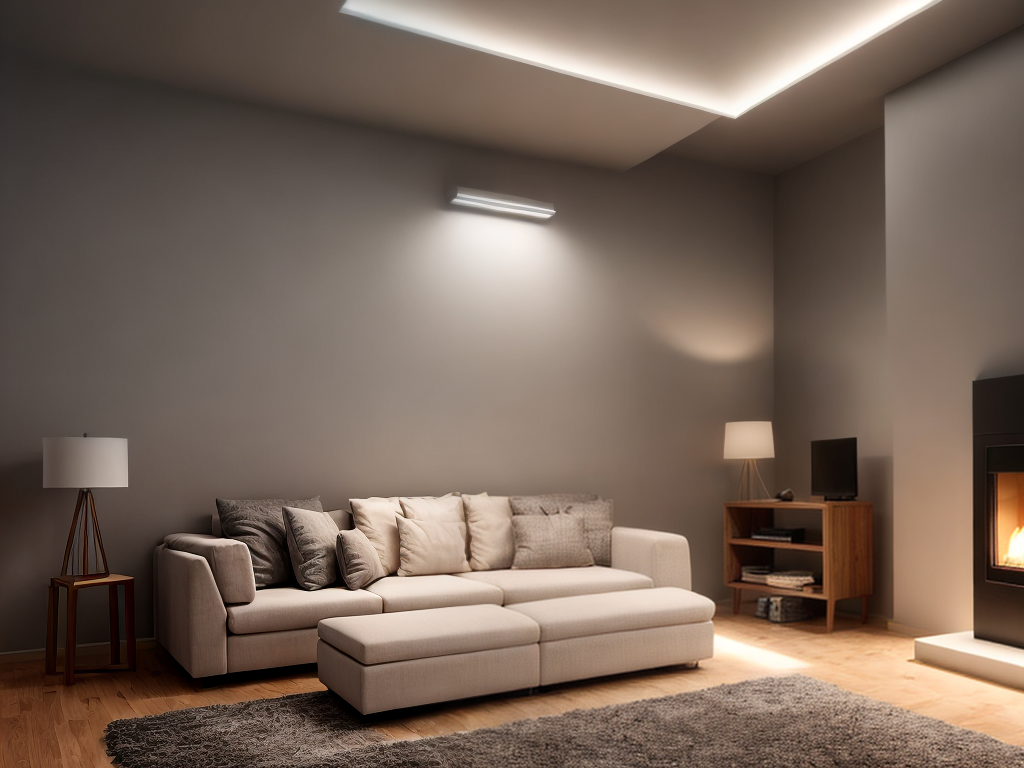Have you ever wondered how those brilliant LED lights are made? Join me as we delve into the fascinating world of LED light production. From the intricate manufacturing process to the key components that make these lights shine, we will uncover the secrets behind their creation. With a keen focus on the principles of LED technology, we’ll explore the advancements that have revolutionized the industry. Get ready to master the art of LED light manufacturing and discover the science behind their mesmerizing glow. So, put on your technical hat and let’s break down the tech together!
Key Takeaways
- LED lights were first invented in the 1960s and were initially used for indicator lights on electronic devices.
- LED lights are made using semiconductor materials like gallium nitride or indium gallium nitride and work based on the process of electroluminescence.
- The manufacturing process of LED lights involves selecting the appropriate semiconductor material, crystal growth, wafer fabrication, mounting the LED chip onto a substrate, and encapsulating it in a lens.
- LED lights have become more energy efficient, have a longer lifespan, offer greater design flexibility, and have revolutionized the lighting industry.
History of LED Lights
In the early 1960s, I discovered that LED lights have a fascinating history. Let’s delve into the incredible invention timeline and early applications of these lights. The story of LED lights begins in the early 1900s when scientists observed the phenomenon of electroluminescence, where certain materials emit light when an electric current passes through them. However, it wasn’t until the 1960s that the first practical LED was invented by Nick Holonyak Jr. at General Electric. This groundbreaking invention paved the way for various applications, such as indicator lights on electronic devices. Over time, advancements in LED technology led to their use in calculators, watches, and eventually, displays and lighting fixtures. The early applications of LED lights laid the foundation for the energy-efficient, long-lasting, and versatile lighting solutions we have today.
Principles of LED Technology
After exploring the history of LED lights, let’s now delve into the principles of LED technology and how these lights are made.
-
LED Efficiency: LED lights are known for their energy efficiency. Unlike traditional incandescent bulbs, LEDs convert most of the energy they receive into light rather than heat. This makes them more efficient and longer-lasting.
-
Semiconductor Materials: LED lights are made using semiconductor materials, such as gallium nitride or indium gallium nitride. These materials have specific electronic properties that allow them to emit light when an electric current is applied.
-
Electroluminescence: LED lights work based on a process called electroluminescence. When an electric current passes through the semiconductor material, it excites the electrons, causing them to release energy in the form of light.
-
Future Applications: LED technology is continuously advancing, and its potential applications are expanding. From lighting up our homes and streets to being used in displays, signage, and even medical devices, the future of LED technology holds exciting possibilities.
With a focus on efficiency and a promising future, LED technology continues to revolutionize the lighting industry and beyond.
Manufacturing Process of LED Lights
Let’s now dive into the manufacturing process of LED lights, starting with the selection of the semiconductor materials. Quality control is paramount in LED light manufacturing to ensure that each component meets the highest standards. The process begins by choosing the appropriate semiconductor material, such as gallium nitride or indium gallium nitride, which determines the color of the LED light. Once the material is selected, it undergoes various processes, including crystal growth, wafer fabrication, and epitaxial growth, to create the LED chip. The chip is then mounted onto a substrate and connected to electrical leads. Finally, the LED chip is encapsulated in a lens, which protects it from damage and enhances its performance. It is important to note that LED light production has a lower environmental impact compared to traditional lighting sources, as it consumes less energy and produces fewer greenhouse gas emissions.
Key Components of LED Lights
As we delve into the key components of LED lights, it is important to understand how these components work together to create the impressive functionality and efficiency of LED technology. The key components of LED lights include:
-
Light Emitting Diode (LED): This is the heart of the LED light and is responsible for converting electrical energy into light with exceptional efficiency. LEDs offer significant energy savings and have a longer lifespan compared to traditional lighting technologies.
-
Semiconductor Material: LED lights utilize semiconductor materials such as gallium arsenide or gallium nitride. These materials enable the LEDs to emit light when an electric current is applied.
-
Heat Sink: LED lights generate some heat during operation. A heat sink is a component that helps dissipate this heat, preventing the LED from overheating and ensuring optimal performance.
-
Driver: The driver is an essential component in LED lights as it regulates the electrical current flowing to the LEDs. It ensures that the LEDs receive the correct voltage and current, contributing to their longevity and efficiency benefits.
Advancements in LED Light Production
LED light production has witnessed significant advancements in recent years, revolutionizing the way these energy-efficient lights are manufactured. One of the most notable advancements is the improvement in energy efficiency. LED lights now require less electricity to produce the same amount of light, making them even more cost-effective and environmentally friendly. This has had a profound impact on the lighting industry, with LED lights becoming the preferred choice for many applications. The advancements in energy efficiency have not only reduced energy consumption but also extended the lifespan of LED lights, making them a more durable and long-lasting option. Additionally, the advancements in LED light production have allowed for greater design flexibility, enabling manufacturers to create lights in various shapes, sizes, and colors to meet the diverse needs of consumers. These advancements have truly transformed the landscape of the lighting industry.




